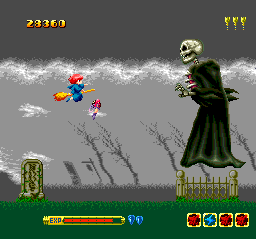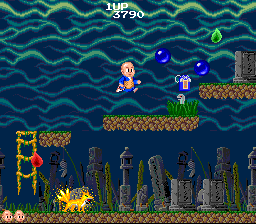Game: Barunba
Genre: Shoot ’em up
Developer: Namco/Zap Corp
Publisher: Namcot
Format: HuCard
Release date: 1990
There are a number of reasons to like this odd, side-scrolling shmup: Its box art is lovely (as is its manual), its bosses are huge and its gameplay offers up a few surprises that help it stand out from the pack. Sadly, there are many more reasons to dislike it–most of which have to do with the aforementioned gameplay. (Two that don’t: The great majority of the game’s enemies and backdrops are at best boring and at worst ugly, while its sound effects are the definition of “grating.”) Specifically, although the globe-shaped ship gamers control while playing Barunba impresses with its rotatable weaponry, the rather cumbersome rotation aspect actually gets in the way more often than not. As such, most folks are likely to keep their guns aimed straight ahead as much as possible. Also, although each of the game’s five stages are surprisingly extensive (e.g., long), most of them become a drag well before you reach the end. So, with three bullet points in favor of Barunba and four against it, what’s my final verdict on this Namcot-published HuCard? I’d say it’s a curiously unique but disappointingly flawed game that’s worth playing only if you find it on the cheap or if you’re fairly obsessed with the shoot ’em up genre.
See also: Previous PCE Reviews












